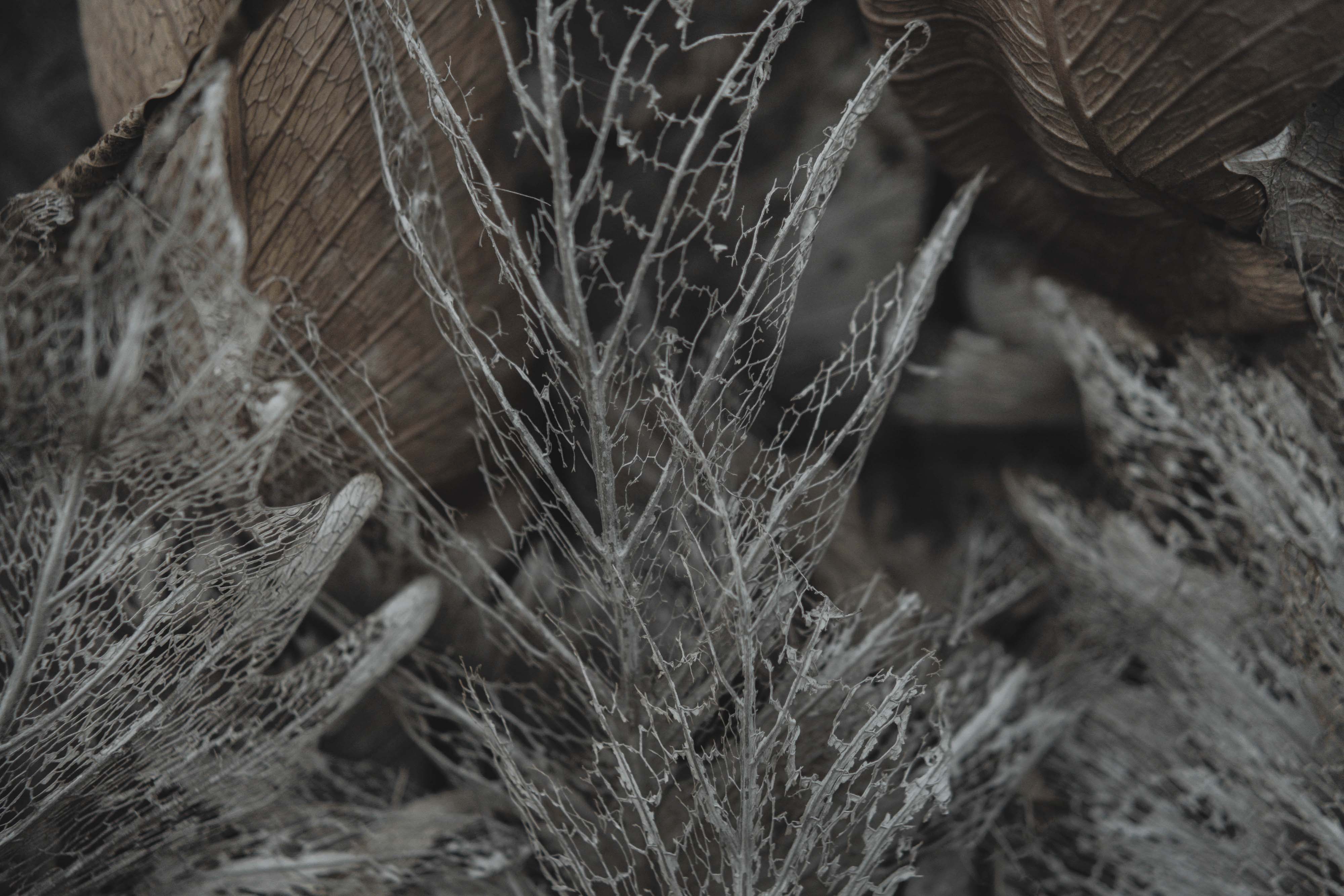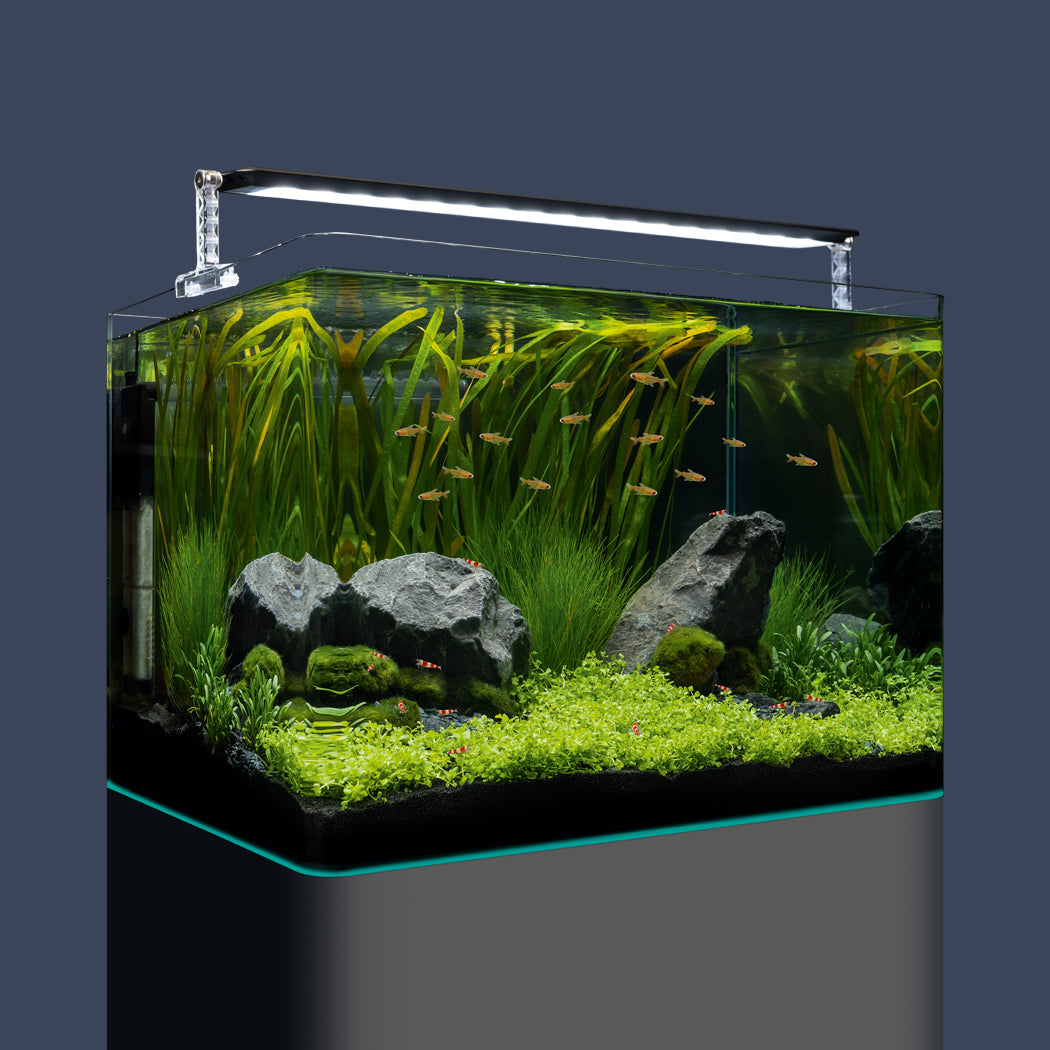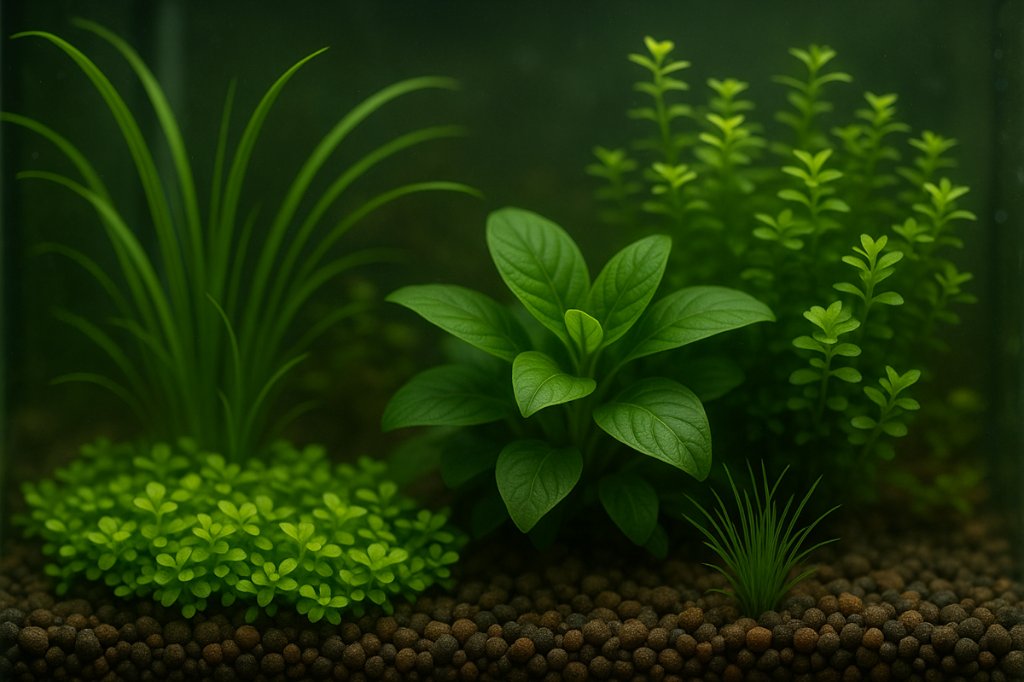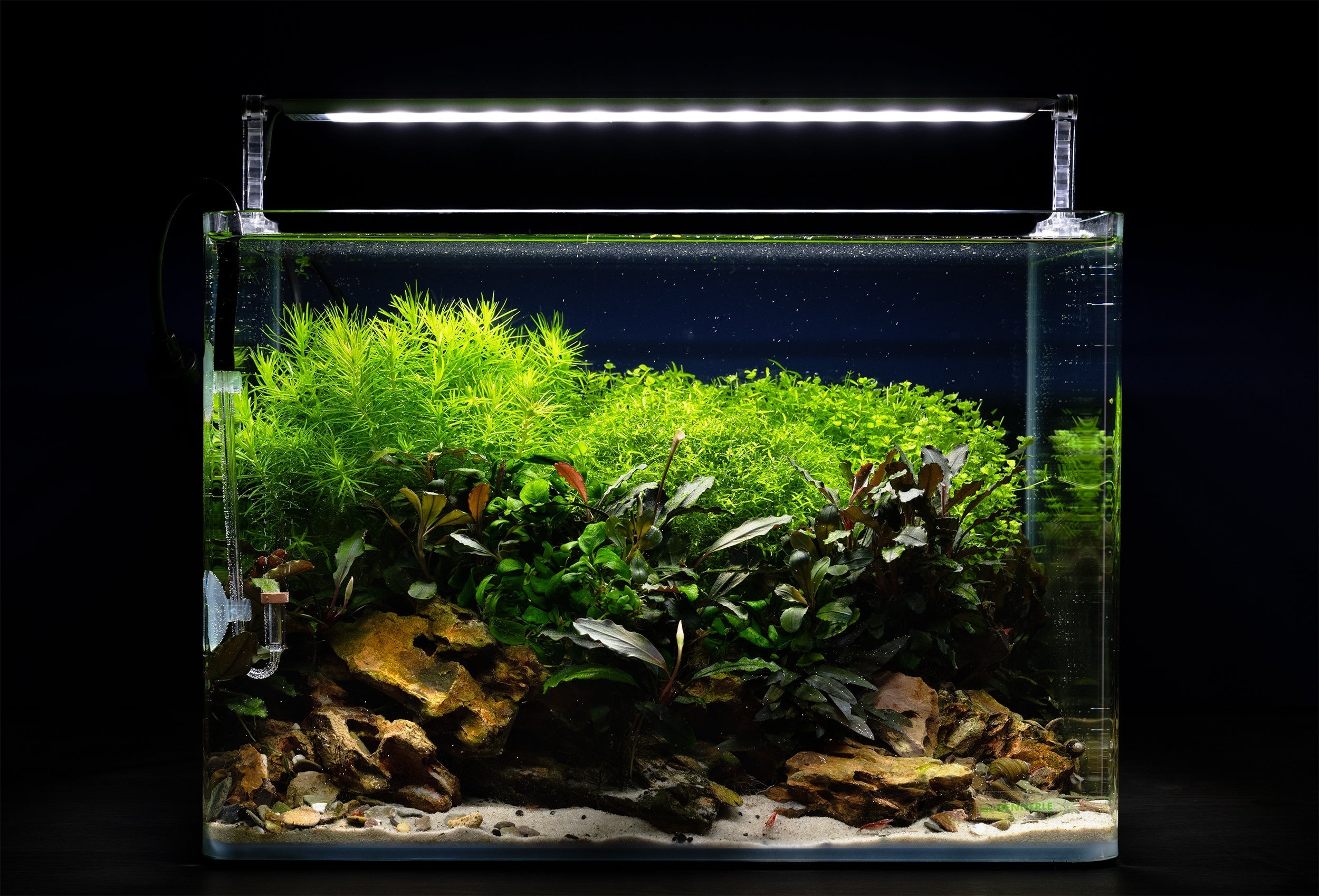In addition to light and carbon dioxide (CO2), aquarium plants require around 20 different nutrients in order to grow healthily.
A basic distinction is made between macro and micro elements. Macroelements, such as nitrogen, phosphorus and potassium, are required by plants in large quantities. Microelements, on the other hand, are trace nutrients that are only required in very small quantities.
Example: Nutrient content in waterweed (Elodea occidentalis)
Macro nutrients:
Chemical symbol = element = concentration in the plant in mg/kg dry matter
N = Nitrogen = 16,000
P = Phosphorus = 1,400
K = Potassium = 8,000
Ca = Calcium = 2,800
Mg = magnesium = 1,000
S = Sulphur = 800
Macro-nutrient contents in Elodea occidentalis, source: Walstad [2007]: The planted aquarium
Micro-nutrients:
Chemical symbol = element = concentration in the plant in mg/kg dry matter
B = boron = 1.3
Cu = copper = 0.8
Fe = iron = 60
Mg = manganese = 4
Mo = molybdenum = 0.15
Zn = Zinc = 8
Micro-nutrient contents in Elodea occidentalis, source: Walstad [2007]: The planted aquarium
For optimal growth, aquarium plants always need a consistent and complete supply of nutrients. If even one element is missing, the plants will start to die. This dependency is described by Liebig's minimum law: The nutrient that is present in the minimum limits growth. This applies to both macro and micro nutrients.
Each nutrient has certain functions in the plant. Many trace nutrients are essential components of enzymes, the bio-catalysts in plant metabolism.
Nutrient deficiencies can be seen, for example, in weak growth, pale, yellow or glassy leaves (chlorosis), dying leaf areas (necrosis) or small, twisted or stunted leaves.
Some nutrients are mobile in the plant. In a deficiency situation, the plant can transport these nutrients from the older leaves to the younger ones. Symptoms of deficiency then show up first on the older leaves, e.g. nitrogen deficiency. Other nutrients are not mobile, e.g. iron. Here, deficiency symptoms first appear on the younger leaves.
There is a very specific nutrient situation in the aquarium. Some nutrients, which are introduced through the fish food, are always present in sufficient quantities, or sometimes even in excess, e.g. phosphate and nitrate. Other nutrients are used up quickly or are completely absent. Tap water, for example, is deferrized and demanganized in the waterworks, i.e. the two essential trace nutrients iron and manganese are removed, as they can clog the pipes. This removes two of the most important trace elements that ensure lush green leaves.
There is an optimum range for each nutrient. If the nutrient concentration in the aquarium water is at a lower level, deficiency symptoms will occur. If the nutrient concentration is significantly higher, this can also have negative effects. In addition, many nutrients compete with each other. If one nutrient is present in excess, it can hinder the absorption of another nutrient. An excess of manganese, for example, means that the plant is less able to absorb iron. It then shows symptoms of iron deficiency, even though there is actually enough iron in the water.
Plants always absorb nutrients via their roots and leaves. Species with a strong root system prefer the roots, those with fewer roots but a large leaf surface prefer the leaves. For healthy, magnificent growth, the plants must therefore be supplied in both ways.
Function of nutrients and symptoms of deficiency
Macro-nutrients:
Carbon
Chemical symbol = C
Function = Component of all organic substances
Deficiency symptoms = slow or no growth
Oxygen
Chemical symbol = O
Function = Component of all organic substances
Deficiency symptoms = (No deficiency known in the aquarium)
Hydrogen
Chemical symbol = H
Function = Component of all organic substances
Deficiency symptoms = (No deficiency known in the aquarium)
Nitrogen
Chemical symbol = N
Function = component of amino acids, proteins, enzymes, nucleic acids, DNA, etc.
Symptoms of deficiency = yellowing of the plant, especially older leaves; small/stunted leaves
Phosphorus
Chemical symbol = P
Function = component of adenosine triphosphate (ATP = most important energy carrier), nucleic acids, DNA, cell membranes
Deficiency symptoms = slowed growth, small shoot tips, small leaves, dark coloration
Potassium
Chemical symbol = K
Function = Activates enzymes, charge balance, osmoregulation, water balance, internal cell pressure
Symptoms of deficiency = Small black holes (necroses), especially in older leaves
Calcium
Chemical symbol = Ca
Function = Activates enzymes, intracellular messenger substance, cell walls
Deficiency symptoms = Yellowing of the leaf edge, crippled leaves
Magnesium
Chemical symbol = Mg
Function = Activates enzymes, central atom of chlorophyll
Symptoms of deficiency = yellowing of the leaf edge (leaf veins green)
Sulphur
Chemical symbol = S
Function = Component of amino acids + proteins
Deficiency symptoms = Youngest leaves yellow (incl. leaf veins)
Micro-nutrients:
Chlorine
Chemical symbol = Cl
Function = Osmoregulation, charge equalization, photosynthesis
Symptoms of deficiency = (No deficiency known in the aquarium)
Boron
Chemical symbol = B
Function = cell division at shoot and root tips, flower formation
Symptoms of deficiency = Death of shoot and root tips
Copper
Chemical symbol = Cu
Function = Enzyme component in electron transport + redox reactions
Deficiency symptoms = dying off of leaf tips / shoot tips, leaf edges discolored white
Iron
Chemical symbol = Fe
Function = enzyme component in electron transport + redox reactions (photosynthesis), N-metabolism
Symptoms of deficiency = yellowing of younger leaves (chlorosis)
Manganese
Chemical symbol = Mn
Function = Activates enzymes, photolysis of water, photosynthesis
Symptoms of deficiency = yellowing of the younger leaves (leaf veins green)
Molybdenum
Chemical symbol = Mo
Function = Enzyme component for nitrate reduction
Symptoms of deficiency = yellow spots between the leaf veins, no flower formation
Zinc
Chemical symbol = Zn
Function = Component of 60 enzymes
Symptoms of deficiency = yellowing of younger leaves
Nickel
Chemical symbol = Ni
Function = Enzyme component urease
Deficiency symptoms = (No deficiency known in the aquarium)




Share:
Plant care - Part 1 - Selection, quantity, preparation and planting
Plant care – Part 3 – Nutrient supply